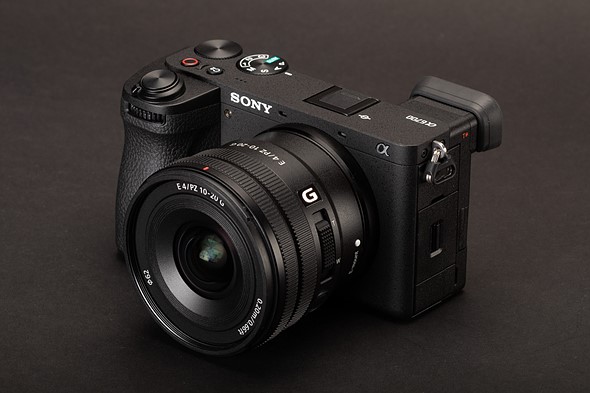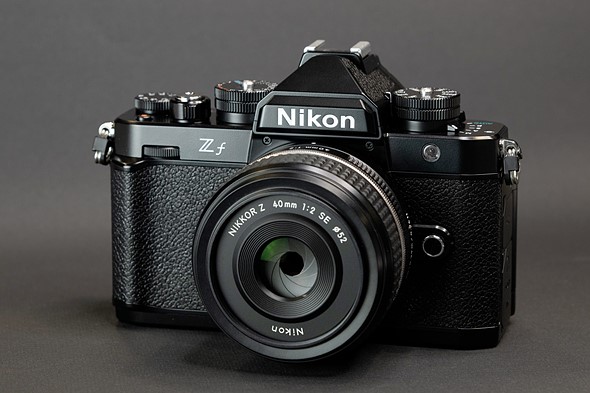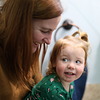 |
Updated Nov 17, 2023
Mirrorless cameras now dominate the interchangeable lens camera market, fifteen years after Panasonic introduced the first example. They include cameras designed for a wide range of photo and video pursuits, and models at everything from budget to professional price points.
We've used and tested just about every current mirrorless camera on the market and picked out what we think are the stand-out models. We'll start with the most affordable models, then work our way up from there. In general terms, the more expensive ones are better, offering better image quality through the use of larger sensors, or higher resolution, faster burst rates or superior video capture. We'll call out why we've made each pick and try to explain the advantages and disadvantages of each choice.
Our picks:
- Best value: Sony a6100
- Best APS-C mirrorless camera: Sony a6700
- Best bargain full-frame: Canon EOS R8
- Best mirrorless camera under $2000: Nikon Zf
- Best mid-priced mirrorless camera: Canon EOS R6 II
- Best high-end mirrorless camera: Nikon Z8
- Compact high-resolution: Sony a7CR
Best value: Sony a6100
24MP APS-C sensor | Hybrid AF with Real-time Tracking | 4K video capture
 |
| Photo: Richard Butler |
Buy now:
What we like:
- Excellent autofocus system
- 4K/30p video recording
- Tilting touchscreen LCD
What we don't:
- Less robust build quality
- Rolling shutter 'jello effect' present in 4K video
- Crop when recording 4K/30p video
The Sony a6100 is an entry-level APS-C mirrorless camera. It's equipped with a 24MP sensor, a touchscreen for easy focus placement and Sony's excellent autofocus tracking which makes it especially easy to focus on people and pets.
The a6100 is happiest if you prefer to point-and-shoot in an auto mode, supported by its very good autofocus. The wide range of lenses available for it give you somewhere to grow if you find yourself catching the photography bug.
See the Sony a6100 studio scene
Best APS-C mirrorless camera: Sony a6700
26MP BSI CMOS sensor | 4K/60p video capture | Fully articulating screen
 |
| Photo: Richard Butler |
Buy now:
What we like:
- Front and rear command dials
- Excellent AF in stills and video
- 4K/120p capture (with crop)
What we don't:
- No AF joystick
- JPEG sharpening can be aggressive
The Sony a6700 is an enthusiast-level APS-C mirrorless camera built around an image-stabilized, 26MP BSI CMOS sensor. It includes an impressive collection of features for both photo and video shooters.
The a6700 might look a lot like the a6100 but it's a much more advanced model with better build, greater capabilities in both stills and video, and more hands-on control points.
Read our full Sony a6700 review
See the Sony a6700 studio scene
What are my other APS-C options?
Although the Sony a6700 is the most capable APS-C camera, if you consider autofocus performance, image quality and video capabilities, there are several other worthy contenders to the title. We like the combination of affordability and likeability of Nikon's Z fc, now that there are a handful of prime lenses to use with it, and we respect the Sony-rivaling capabilities of several of Canon's APS-C RF models.
 |
|
Fujifilm's X-S20 is also worth considering if you're looking at APS-C cameras Photo: Shaminder Dulai |
But it's the Fujifilm X-S20 we think deserves most consideration, if you conclude the a6700 isn't for you. We think it's a pretty good-looking camera, and one that shoots great video, as well as attractive stills. Touches such as the AF joystick make it that bit more engaging and enjoyable to shoot with, than the Sony.
Its autofocus tracking isn't anything like as reliable as Sony or Canon's latest cameras, but where it really shines is in the selection of lenses available for it. Fujifilm makes a broad selection of prime lenses and the excellent 18-55mm F2.8-4.0 OIS zoom, that's significantly better than the lenses bundled with most of these cameras. Third party support is strong, too, meaning the camera can grow with you as your photography develops.
Full-frame mirrorless
Full-frame cameras (those with image sensors the same size as traditional "35mm" film) offer the opportunity for better image quality than smaller formats, simply because they have a larger area on which to capture light. However, you don't get something for nothing: even if you can find an affordable full-frame camera at a good price, the lenses needed to make the most of it will be larger and will typically cost more than the lenses for APS-C or Four Thirds sensors. Broadly speaking there's a balance to be struck between image quality, size and price, which is worth contemplating before you make the assumption that full-frame is the best (or even 'better') format.
Best budget full-frame mirrorless: Canon EOS R8
24 MP full-frame CMOS sensor | 4K/60p 10-bit video recording | 8 fps burst shooting
 |
| Photo: Richard Butler |
Buy now:
What we like:
- Great image quality
- Very good AF subject detection and tracking
- Good starting price
What we don't:
- No in-body image stabilization
- Short battery life
- No AF joystick
The Canon EOS R8 is a surprisingly capable compact full-frame mirrorless camera that has the features and image quality of Canon's EOS R6 II at a much lower price.
Read our full review of the Canon EOS R8
See the Canon EOS R8 studio scene
What are the other entry-level full-frame options?
We also think the Nikon Z5 is worth considering, if you're looking for a comparatively affordable way into a full-frame system. It's older than the Canon and its autofocus tracking and video capabilities lag somewhat behind as a result. Like Canon's RF system, Nikon's Z-mount lens system is also somewhat short on affordable lenses to pair with an entry-level camera, though Nikon has allowed a couple of other brands to make selected lenses for the system.
What really makes us bring it up here is its usability. The Z5 has a larger, higher-resolution viewfinder, much longer battery life, in-body image stabilization and an AF joystick, all of which can make it a rather more enjoyable camera to shoot with. Definitely worth a look.
Best mirrorless camera under $2000: Nikon Zf
24MP full-frame BSI CMOS sensor | Full-width 4K/30 video, cropped 4K/60 | Stabilization rated to 8EV
 |
| Photo: Richard Butler |
Buy now:
What we like:
- Distinctive design with direct controls
- Effective subject recognition
- Strong stills and video features
What we don't:
- Weight and minimal grip can become uncomfortable
- Slow MicroSD second slot
- Few custom buttons
There are some exceptionally good cameras in the $2000-$2500 price category, but few of them are as eye-catching as the Nikon Zf. While the styling is distinctly 1981, the performance is much more contemporary, with very competitive autofocus and the strong balance of stills and video capabilities that we've come to expect from a camera at this price.
Read our initial review of the Nikon Zf
Best mid-priced full-frame mirrorless: Canon EOS R6 II
24MP Dual Pixel AF CMOS sensor | 40fps burst shooting | 4K/60 from 6K capture
 |
| Photo: Dale Baskin |
Buy now:
What we like:
- Simple, powerful AF for stills
- Fast 40fps shooting with continuous AF
- Excellent battery life
What we don't:
- AF less reliable in video mode
- SD cards limit burst duration
- E-shutter can distort fast-moving subject
The Canon EOS R6 II stands out from strong competition by doing everything really well. Its autofocus is only a fraction behind the Sony a7 IV, but its video is better, with less rolling shutter and no need to crop to achieve 4K/60p. This gives it performance ahead of the Panasonic and Nikon offerings at this price, and its ergonomics are a match for the best of them. It's just a really all-round solid package.
Read our full review of the Canon EOS R6 II
See the Canon EOS R6 II studio scene
The mid-priced rivals
There are plenty of other cameras worth considering, in the around $2000 price category. The Canon and Nikon are the real stand-outs, but you're unlikely to regret your decision, whichever you opt for. The Panasonic Lumix DC-S5 II would probably be our choice if you want to shoot both stills and video, despite it having to crop in to capture 4K/60, which the Canon doesn't. It's the level of supporting tools that makes it so videographer-friendly, with a wide variety of capture formats, waveform displays and the ability to set exposure as shutter angle making it stand out. The S5 IIX is even stronger in this regard, with the ability to record very high quality video straight to an external SSD.
Sony's a7 IV is also a solid enough choice, with excellent autofocus and slightly higher resolution capture than its peers. It's the smaller, less expensive a7C II that we prefer, though. Its autofocus is a generation newer and it's appreciably smaller than its rivals. The viewfinder is small and there's no AF joystick though, which are the main reasons it's not one of our main picks.
Best high-end mirrorless camera: Nikon Z8
46MP Stacked CMOS sensor | 20fps Raw, 30fps full-size JPEG shooting | 8K/60 and 4K/120 video
 |
| Photo: Richard Butler |
Buy now:
What we like:
- Superb autofocus
- Fast shooting
- Excellent video
What we don't:
- Large, heavy body
- Relatively low-res (though fast) viewfinder
- Not all subject detection modes equally good
The Nikon Z8 offers essentially all the capabilities of Nikon's pro-focused sports camera, the Z9. It's somewhat larger than its immediate peers, but its combination of resolution, speed, autofocus capability and video features means it will support you in just about anything you ask of it.
Compact high-resolution: Sony a7CR
61MP BSI CMOS sensor | 4K/60p video with 10-bit color | Dedicated ‘AI’ processor for AF system
 |
| Photo: Richard Butler |
Buy now:
What we like:
- Big camera features in a small body
- Outstanding AF performance
- Auto Framing video mode
What we don't:
- Small, low-res viewfinder
- No joystick control
- No fully mechanical shutter
The Sony a7CR takes most of the features of the more expensive a7R V and provides them in a smaller package. The viewfinder is disappointing for such an expensive camera, but nothing gives you so much image quality in such a small, capable package.
Read our Sony a7CR initial review
What are the other high-end options?
Just about all the cameras in the >$2500 price bracket are, unsurprisingly, rather good. We go into a little more detail about their relative merits in our 'High-end camera buying guide.' As at any price, the key things to consider are what types of photography you plan to do (and hence, which features and capabilities are most important to you), and whether the lenses you need are available at a price you're willing to pay.
Why you should trust us
This buying guide is based on cameras used and tested by DPReview's editorial team. We don't select a camera until we've used it enough to be confident in recommending it, usually after our extensive review process. The selections are purely a reflection of which cameras we believe to be best: there are no financial incentives for us to select one model or brand over another.









































































